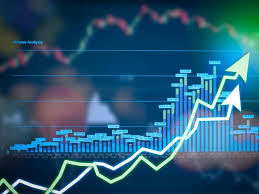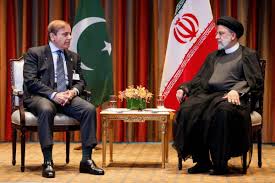
Recovery Amid Economic Challenges
Pakistan’s economy, long grappling with structural challenges, political instability, and external shocks, is showing signs of recovery despite a backdrop of global uncertainties. After facing severe economic stress, including skyrocketing inflation, devaluation of the rupee, and dwindling foreign exchange reserves, Pakistan’s economic indicators are beginning to stabilize. The growth is attributed to multiple factors, including fiscal consolidation, export growth, and resilience in key sectors like agriculture and manufacturing. Although recovery remains fragile, the recent data suggests that Pakistan’s economy is turning a corner after years of stagnation.
Boost in Foreign Exchange Reserves and Exports
One of the primary drivers of this recovery is the improvement in Pakistan’s foreign exchange reserves, which have been bolstered by increased remittances from overseas Pakistanis and a rebound in exports. In recent months, remittances have surged, providing much-needed liquidity to the economy. Additionally, the government’s focus on boosting exports, particularly in textiles and IT services, has contributed significantly to the positive trajectory. The easing of some global supply chain disruptions, coupled with the government’s efforts to secure new trade agreements, has helped stabilize the current account balance and support the rupee’s value.
Agriculture Sector Recovery
The agriculture sector, which forms the backbone of Pakistan’s economy, has also seen a recovery, thanks to favorable weather conditions and government policies aimed at boosting productivity. Key crops like wheat, rice, and sugarcane have experienced good harvests, which is expected to improve food security and provide a boost to rural incomes. While challenges remain—such as water scarcity and climate change—efforts to modernize farming techniques and improve irrigation infrastructure are gradually showing results. A more resilient agriculture sector will play a crucial role in sustaining the recovery.
Manufacturing Sector Growth
Moreover, Pakistan’s industrial sector, particularly manufacturing, has also been a significant contributor to the recovery. The country has witnessed a rebound in production, especially in textiles, cement, and steel, which are key drivers of economic activity. Government incentives, such as tax breaks for manufacturers and improvements in energy supply, have provided much-needed support. Despite facing high input costs and energy shortages, Pakistani manufacturers are gradually regaining competitiveness in the global market, which is essential for sustained economic growth.
Challenges and Global Risks
However, the road ahead remains challenging, as global economic conditions continue to pose risks. Inflation, though declining, remains a concern for the everyday consumer, and global interest rates could impact Pakistan’s borrowing costs. Furthermore, political uncertainty and internal structural reforms continue to be critical factors influencing the economic outlook. Nevertheless, the signs of recovery in Pakistan’s economy, if sustained, could offer hope for a more stable and prosperous future, with potential benefits for both the domestic population and global trade partners.
Find out how to turn your PUBG skills into earnings with our tutorial

